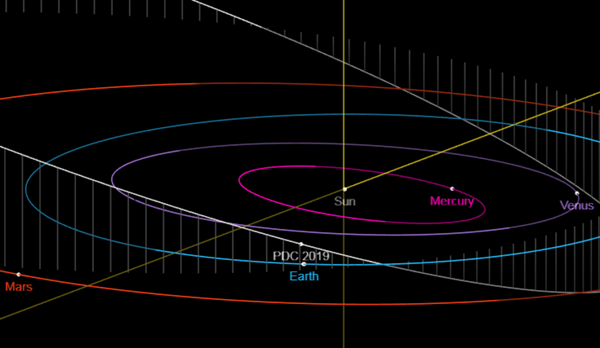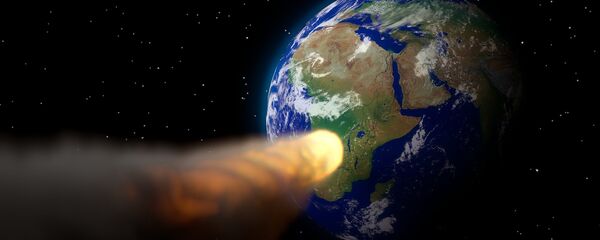The exercise, taking place from April 29 to May 3, is part of the 2019 Planetary Defense Conference, and will see participants take on the role of the national government, space agency, astronomer and a civil protection officer. According to the space agency, the exercise takes place every two years, with participating individuals being given new impact developments every day of the storyline.
— ESA Operations (@esaoperations) April 29, 2019
The hypothetical impact scenario handed to participants this week indicates that asteroid "2019 PDC" first popped up on radars on March 26, 2019, and that it is most likely to strike Earth on April 26, 2027. However, after a little more than a month of observations, the chance of a strike went from 1 in 50,000 to 1 in 100.
"When it was first detected, asteroid 2019 PDC was about 57 million km from Earth, equal to 0.38 Astronomical Units. It was travelling about 14 km/s, and slowly getting brighter," reads the scenario.
"Very little is known about the asteroid's physical properties. From its brightness, experts determine that the asteroid's mean size could be anywhere from 100-300 meters."
Now, for the remainder of the week, it's up to the participants to figure out how best to proceed.

"The first step in protecting our planet is knowing what's out there," Rüdiger Jehn, ESA's head of Planetary Defence, said in a statement. "Only then, with enough warning, can we take the steps needed to prevent an asteroid strike altogether, or minimise the damage it does on the ground."
As of April 2019, ESA reports that researchers have discovered 20,000 asteroids whose orbits brought them closer to Earth. That number is expected to rise, as researchers have been finding near-Earth asteroids at a rate of 150 every month.
"These exercises have really helped us in the planetary defense community to understand what our colleagues on the disaster management side need to know," Lindley Johnson, NASA's Planetary Defense Officer, said in a statement.
"This exercise will help us develop more effective communications with each other and with our governments."
The space agency also stated in a release that new technologies, such as the Flyeye and the Test-Bed telescopes, will enable professional skywatchers to "discover, confirm and understand the ancient rocks that hurtle through space." It added that the scopes would be "fundamental to implementing mitigation measures."
The public will be able to keep tabs on the tabletop discussion throughout the week on the livestream feed provided by the US' National Aeronautics and Space Administration.


